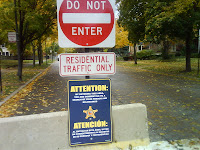 “Life is short; eat dessert first.
“Life is short; eat dessert first.” This well-known piece of lighthearted advice is rarely taken literally. Instead, those who subscribe to the dessert-first policy live life passionately for the moment, take risks, and enjoy every minute of it.
As usual, a more concise translation can be found in another language: in this case, one word in Urdu: junnoon. The word stems from the Farsi junoon, meaning obsession, craziness, and passion, and the downtown Indian fusion restaurant of the same title takes its namesake seriously.
Trendy Indian décor infuses the atmosphere at Junnoon and promises a vibrant scene – if you can get in the door. Entrance to the restaurant is a challenge; the heavy copper-plated wooden door blends into the building façade, and one might accidentally walk through the window unless directed otherwise. As a party of 11, there was a 20 minute wait for a table, but the glowing glass coffee table, crystal ceiling hangings, and stack of bamboo near the door in the entry lounge made for easy and engaging conversation.
The main dining area was a deep carmine; dimly lit but comfortable and intimate. Almost as soon as we sat down, complimentary plates of the thin, round chips called papadum were placed before us, accompanied by a yogurt-peanut sauce. Although rather bland and unenhanced by the dense yogurt-peanut blend, the papadum came in handy later when trying to snag bites of curry from across the table.
When ordering, a dining companion mentioned his peanut allergy. The young blond waiter with an intriguing but unplaceable European accent swiftly pointed out the menu items that contained the offending legume and conjured up a peanut-free yogurt and avocado raita, on the house.
The temperature in the restaurant was warm enough to warrant comment; a nearby thermostat read 73. But all temperature concerns were soon remedied by passionfruit mango lassis ($6) and virgin mojitos (also $6). The lassi was full-bodied and velvety without being heavy. The sweetness of the mango was tempered by a light tart dash of passionfruit. The mojito, on the other hand, was downright sour. Refreshingly chilly and served in a tall tumbler, its raw flavors of mint, sugar, and lime did well to awaken the palate.
Junnoon’s kitchen closes at 9:30 p.m., so to get our order in on time, our obliging waiter brought dessert menus along with our main menus. Both were printed in an uninspired but quite legible font on thick yellow parchment. All menu selections strike the balance between providing patrons with variety but avoiding an overwhelming inundation of choices.
Appetizers Lamb kebab rolls ($9) were terrifically satisfying. Served with a flavorful and zesty green mint sauce, the appetizer was outstanding in its balance of substance and taste.
Spinach paneer parcels ($8), despite their endearing name, packed in some serious spice. Six quiche-like cups of puff pastry filled with a piquant spinach-cheese mixture had no need of the even hotter red garlic aioli sauce, but the flavors served as effective preparation for the heat of the entrées.
Entrées Tandoori black pepper steak ($20), served with roasted sesame yellow sweet potatoes, was juicy and substantial, but it was nothing without the sweet and sour pomegranate molasses. The sauce poured more like ponzu than molasses and brought out bitter, savory, and intriguingly dark undertones in the meat while adding its own tang.
“Old Delhi Style Chicken,” ($19), was essentially a colorfully named chicken tikka masala, also known as butter chicken. A spicy red curry carried the tender meat well, although the former lacked definition and could have been improved by evoking a measure of sweetness to balance the spice.
Tamil chicken ($19) incorporated cubed chunks of chicken into a more temperate yellow curry. Unfortunately, the yellow curry leaned toward chalkiness, but members of our party with lower spice tolerance appreciated the respite.
Sides Garlic and rosemary naan ($4 and $3, respectively) had a crispy exterior and a warm, tender interior. Four pieces per order left only a taste for each diner, but the flatbread soaked up excess curry remarkably well.
A side of black lentils took a little longer to arrive, but was well worth the wait; the lentils were suspended in a vaguely spicy mahogany sauce that provided a solid base for other more exotic dishes.
Dessert Dynamic and delicious though the appetizers and entrées were, the true caliber of a restaurant can almost always be measured by dessert. Here, Junnoon does not disappoint.
Because we had a birthday in our party, the icy vanilla kulfi (normally $7) was on the house. A wafer of caramelized sugar accompanied the rich vanilla ice cream, which carried hints of cardamom.
But the pièce de résistance and quite possibly one of the best desserts I have ever tasted was the spiced molten chocolate cake ($8). A petit cylinder of chocolate cake was filled with heaven in the form of hot chocolate sauce lightly touched with cinnamon. Alongside the cake of joy and happiness rested several grapefruit slices and ginger vanilla ice cream that was more vanilla than ginger. Both were pleasant, but neither could match their divine companion.
Like most upscale restaurants, Junnoon automatically adds an 18% gratuity for parties of eight or more. With eleven high school sophomores to wait on, our server more than earned his tip. But despite the lateness of the hour and the high energy level of the customers, the wait staff was courteous throughout. There was never a moment when they seemed exasperated or even mildly annoyed, and for this they are to be highly commended.
Indeed, there is little room for criticism at Junnoon. And although the “eat dessert first” philosophy evokes passion and a love of life, the overall quality of food, ambiance, and service at Junnoon merits a rather different aphorism: “save the best for last!”
 After several weeks' silence on this blog, I figured it was only fitting to finish off the decade with a multimedia feature.
After several weeks' silence on this blog, I figured it was only fitting to finish off the decade with a multimedia feature.



















